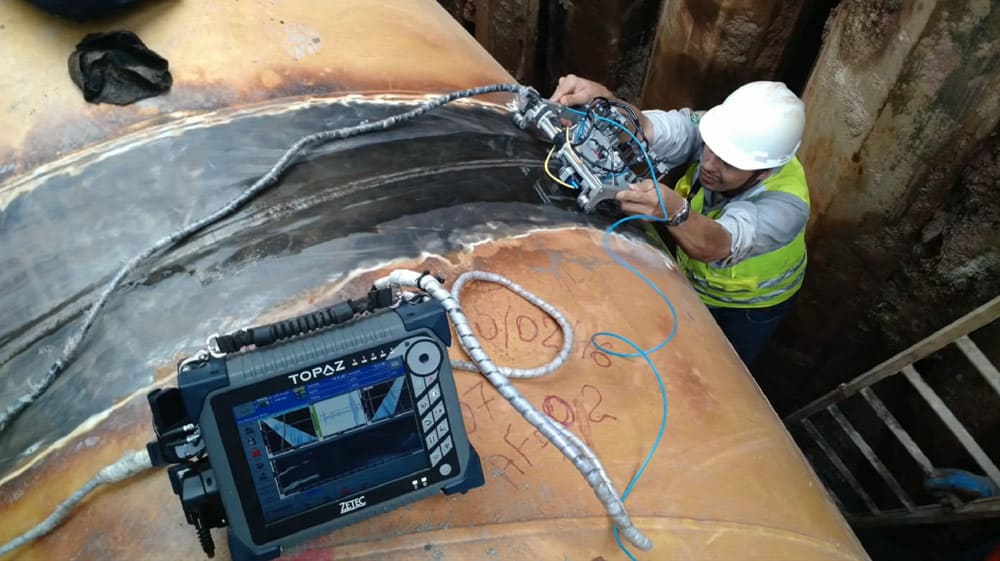
Best Practices for Pipeline Welding Examination: Strategies, Specifications, and Treatments to Accomplish Top Quality Guarantee and Compliance
Reliable pipeline welding assessment is essential for guaranteeing the stability and safety of important framework. By utilizing a combination of strategies such as aesthetic assessment and progressed non-destructive testing approaches, in addition to adherence to developed sector standards like those from ASME and AWS, companies can substantially improve their quality control processes. Nonetheless, the execution of these finest practices poses different difficulties that warrant mindful consideration. Understanding the intricacies associated with each stage of evaluation is important to accomplishing conformity and reliability in pipe systems. What specific approaches can be employed to browse these difficulties successfully?
Relevance of Welding Examination
The integrity of welded joints is extremely important in making certain the security and integrity of pipeline systems. Proper welding strategies and detailed examination procedures are vital to avoid failings that can bring about catastrophic incidents, environmental damage, and loss of life. Pipeline Welding Inspection. Welding evaluation functions as a preventive step, identifying issues such as splits, porosity, and insufficient combination before they rise right into major issues
Furthermore, pipe systems usually operate under high stress and extreme problems, making the high quality of welds even more critical. Governing conformity is an additional considerable aspect, as various criteria dictate the quality control procedures that should be stuck to in pipe building and upkeep. Failure to abide can result in economic losses and legal ramifications.

The duty of welding inspection extends beyond mere confirmation of workmanship; it includes the guarantee of long-term operational stability. This includes an organized approach that includes not just aesthetic assessments yet also advanced non-destructive testing techniques. Ultimately, effective welding assessment is a financial investment in the long life and safety of pipeline systems, ensuring they function as intended while reducing dangers linked with product shortages.
Trick Evaluation Methods

Aesthetic evaluation, usually the first line of protection, enables the identification of surface problems such as splits, undercuts, and porosity. Ultrasonic screening employs high-frequency acoustic waves to spot interior imperfections, offering a complete assessment of weld integrity. This non-destructive approach is particularly efficient for determining discontinuities that may not show up externally.
Radiographic screening involves using X-rays or gamma rays to create pictures of the bonded joint, disclosing internal problems. This method supplies detailed insights but may need specific tools and safety and security considerations. Lastly, magnetic bit testing is efficient for detecting surface and near-surface discontinuities in ferromagnetic products, making use of magnetic areas and great iron particles.
Market Standards and Rules
Conformity with market standards and regulations is essential for making certain the high quality and safety and security of pipe welding evaluations. These criteria give a framework for best techniques in welding processes, materials, and inspection strategies, allowing companies to reduce defects and boost the stability of pipeline systems. Key bodies such as the American Culture of Mechanical Engineers (ASME), the American Welding Culture (AWS), and the International Organization for Standardization (ISO) collection forth guidelines that are widely acknowledged and adopted within the sector.
In the United States, laws from the Pipeline and Hazardous Products Security Management (PHMSA) govern the security of pipe operations, mandating extensive examination procedures. These criteria not just offer to shield public safety and the atmosphere however Visit This Link additionally guarantee conformity with lawful and contractual responsibilities. Adherence to the pertinent codes, such as ASME B31.3 for process piping, is crucial for preserving page functional performance and regulatory compliance.
In addition, continuous updates and modifications to these criteria mirror technological improvements and evolving market techniques, emphasizing the requirement for companies to remain informed and train workers accordingly. Ultimately, robust compliance with recognized requirements cultivates trust and reliability in pipe framework, protecting both properties and stakeholders.
Effective Evaluation Procedures
Efficient examination treatments are essential for determining prospective defects in pipeline welds and guaranteeing the general stability of the system. A methodical technique to examination encompasses several essential phases, including pre-weld, in-process, and post-weld evaluations. Each phase plays an important role in preserving high quality assurance.
Throughout pre-weld examination, it is crucial to assess the materials and joint configurations, making sure conformity with job specifications. In-process inspections entail monitoring welding strategies and criteria, such as heat input and travel rate, to stop issues from taking place. This stage enables real-time modifications to welding techniques.
Post-weld examinations include non-destructive testing (NDT) methods like radiography, ultrasonic testing, and magnetic fragment screening. These methods help discover interior and surface area flaws that might compromise the pipe's performance. Documentation of all inspection tasks is vital, giving a deducible record that sustains conformity with industry criteria.
Training and certification of examination personnel better improve the effectiveness of these procedures. By sticking to an organized examination protocol, companies can mitigate dangers, ensure compliance, and eventually deliver pipelines that fulfill stringent safety and security and efficiency needs.
Typical Obstacles and Solutions
Pipeline welding assessment offers numerous usual challenges that can impact the top quality and security of the last item. One significant difficulty is the variability in welding methods and products, which can result in irregular weld quality. To resolve this, it is important to develop standard treatments and training for welders, guaranteeing a consistent method throughout tasks.

Ecological elements, including temperature level and humidity, can additionally influence the go to my blog welding procedure, potentially bring about fractures or insufficient blend. Executing regulated atmospheres and sticking to pre-weld procedures can minimize these threats.
Final Thought
In conclusion, the application of ideal methods for pipe welding examination is vital for ensuring quality control and conformity with industry requirements. A comprehensive technique, including various methods such as visual, ultrasonic, and radiographic screening, facilitates the identification of flaws throughout all stages of the welding procedure. Pipeline Welding Inspection. Adherence to established guidelines and reliable inspection treatments not only improves the integrity and safety of pipeline systems yet also mitigates risks connected with welding defects, thus advertising total functional integrity
Compliance with market requirements and laws is vital for making sure the top quality and safety and security of pipeline welding inspections. These requirements supply a structure for ideal techniques in welding procedures, materials, and assessment strategies, permitting companies to minimize problems and improve the stability of pipeline systems.In the United States, policies from the Pipe and Hazardous Materials Security Administration (PHMSA) govern the safety of pipeline operations, mandating rigorous evaluation protocols. An organized strategy to inspection encompasses numerous crucial stages, consisting of pre-weld, in-process, and post-weld assessments.In final thought, the application of ideal techniques for pipe welding assessment is necessary for making sure top quality assurance and compliance with industry standards.